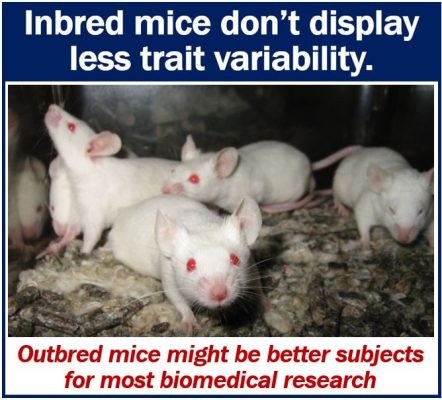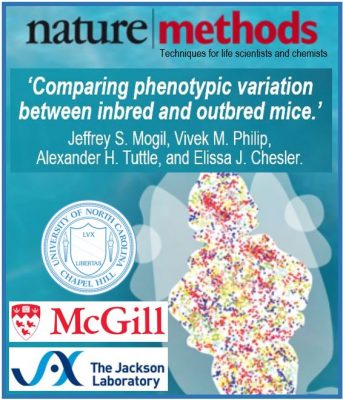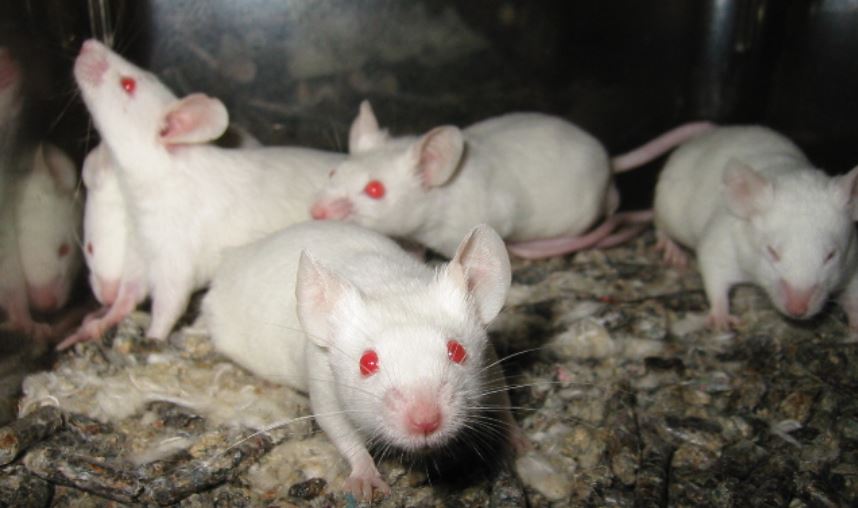More than half of all non-human subjects of biomedical research are mice. Most of them are inbred mice. In other words, the parents of many laboratory mice are brothers and sisters. After several generations of inbreeding, the mice are genetically identical to one another, i.e., they’re like clones or twins.
We know that inbreeding among species harms health and reduces vigor. That is partly why incest is such a universal taboo among humans.
Inbred mice have specific and important uses for researchers who focus on immunology and genetics. Geneticists often prefer inbred mice over the healthier and more robust ‘outbred’ animals because they do not differ genetically.
Scientists share the assumption that data that we have gathered from inbred mice will be more consistent. In other words, they will feature less variability. Therefore, experiments can be more powerful, faster, and less expensive.
Study comparing outbred and inbred mice
A new study found that this assumption – that inbred mice display less trait variability – is false. Researchers from McGill University, the Jackson Laboratory, and the University of North Carolina at Chapel Hill wrote about their study and findings in the prestigious journal Nature Methods (citation below).

The authors gathered and analyzed data from previously published scientific papers from across a wide spectrum of biomedical literature. They focused on studies that used both outbred and inbred mice in the same experiments.
They compared the variability among individual outbred and inbred animals. The scientists didn’t find any differences across a wide range of behavioral and physical traits.
The researchers also tested their hypothesis on new, high-diversity outbred mice populations at The Jackson Laboratory in Bar Harbor, Maine, USA.
A hypothesis is a proposed explanation for a phenomenon. In scientific reasoning, it is an explanation that is testable. A scientist bases a hypothesis on previous observations.
When a reasonable scientific explanation is wrong
Alexander Tuttle, who was lead author, said:
“This is a perfect example of a reasonable scientific expectation that turns out to be incorrect.”
“Although inbred mice are less genetically variable than outbreds, they demonstrate the same amount of variability in almost any observable measure.”
Dr. Tuttle is a Pain and Autism Researcher at the University of North Carolina Neuroscience Center at Chapel Hill.
The authors believe that their findings will encourage researchers to use more outbred mice.

Inbred mice not really ‘normal’
Senior author Jeffrey Mogil said:
“We’ve known for a long time that inbred mice are small and breed terribly, and strongly suspected that this means they’re not really ‘normal,’ but we’ve always thought we were making a fair trade-off, getting ‘tighter’ data.”
“If that’s not true, then there’s really no contest. Outbred mice are more robust. Why wouldn’t you use them?”
Mogil is a Professor at the Department of Psychology at McGill University. He is Canada Research Chair in Genetics of Pain (Tier I) and E.P. Taylor Chair in Pain Studies.
Citation
“Comparing phenotypic variation between inbred and outbred mice,” Jeffrey S. Mogil, Vivek M. Philip, Alexander H. Tuttle, and Elissa J. Chesler. Nature Methods, volume 15, pages 994–996 (2018). DOI: https://doi.org/10.1038/s41592-018-0224-7.

